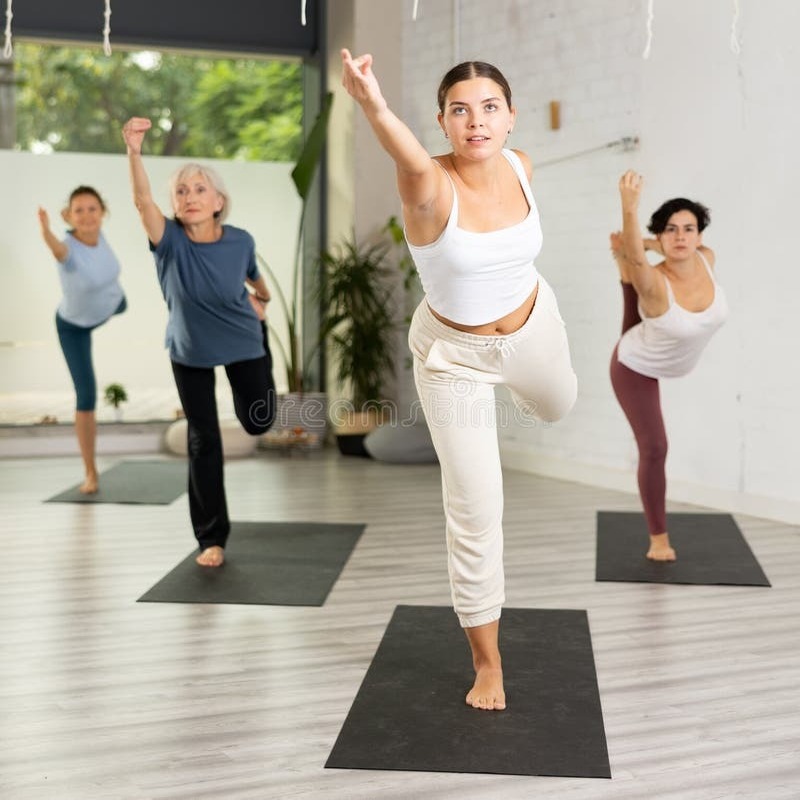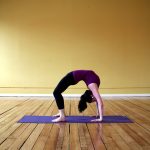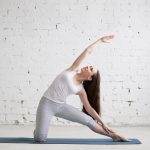Introduction to Dancer Pose (Natarajasana)
Yoga dancer pose, or Natarajasana, is an elegant yoga asana. It combines balance, flexibility, and strength. As you stand on one leg, the other lifts up and back, reaching for the stars. Your arm extends back, holding onto your elevated foot. This creates a beautiful posture resembling the grace of a dancer.
This pose is named after Nataraja, the Hindu god Shiva’s dancing avatar. It symbolizes cosmic energy and the connection between physical and spiritual. Natarajasana challenges your concentration and improves your focus. It also stretches your chest, shoulders, and thighs while strengthening your legs and core.
For those new to yoga, Dancer Pose may seem daunting. However, with patience and practice, you can achieve it. Begin with foundational yoga postures to build strength and balance. Props like a strap can help you hold your foot if reaching it is initially tough.
Remember, each person’s Dancer Pose will look different. Focus on your body’s needs and how the pose feels rather than its appearance. Over time, balance and flexibility improve, and so does mental tranquility. Stay calm in the pose and be patient with your progress. With steady practice, you’ll find beauty and strength in Natarajasana.
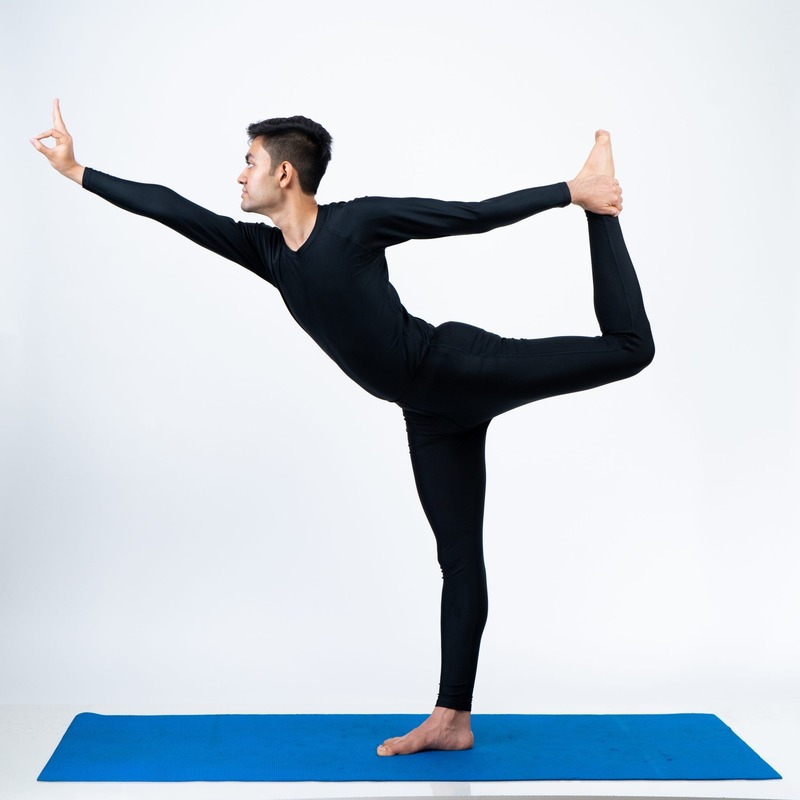
The Benefits of Practicing Dancer Pose
Dancer Pose, or Natarajasana, brings multiple benefits to both body and mind. It is not just a physical exercise; it cultivates concentration and inner serenity. Let’s delve into the many advantages of including this pose in your yoga routine.
1. Enhances Balance and Stability: Standing on one leg greatly improves your balance. This posture trains your body to maintain stability, which is beneficial in daily activities.
2. Increases Flexibility: As you reach your arm backward to hold your foot, you are stretching your shoulders and chest. Your back leg also gets a good stretch, enhancing the flexibility of the thighs and hips.
3. Strengthens Muscles: The pose requires strength in the standing leg, which tones and builds the quads and calves. The core also engages to maintain posture, thus strengthening abdominal muscles.
4. Improves Focus and Concentration: Balancing on one foot requires a great deal of mental focus and can help to clear your mind of unnecessary thoughts, increasing your concentration levels.
5. Emotional Benefits: By opening the chest and stretching the body, Dancer Pose encourages the release of tension and stress, promoting a sense of calm and well-being.
6. Symbolic Significance: Reflecting on the symbolism of Natarajasana, linked to the Hindu god Shiva, imbues a spiritual depth to your practice, enhancing mindfulness and the mind-body connection.
In summary, Dancer Pose is a multifaceted asana. It supports physical health, nurtures mental focus, and introduces a spiritual element to your yoga practice. Regularly incorporating this pose can lead to significant improvements in balance, strength, and mental clarity.
Preparatory Poses for Dancer Pose
Before attempting the challenging dancer pose, engage in preparatory poses. These poses will increase your balance, flexibility, and strength, crucial components for mastering Natarajasana. Below are essential poses to include in your routine:
1. Mountain Pose (Tadasana): Start with this foundational pose to gain balance and alignment. Stand tall, with feet together, and feel your weight evenly distributed.
2. Chair Pose (Utkatasana): This pose strengthens your thigh muscles and improves lower body strength. Bend your knees as if sitting in a chair, keeping your back straight.
3. Warrior I (Virabhadrasana I): Enhance your balance and focus by stepping one foot back, bending the front knee, and raising your arms.
4. Warrior II (Virabhadrasana II): Similar to Warrior I but with arms extended to the sides, this pose increases leg strength and hip flexibility.
5. Warrior III (Virabhadrasana III): This advanced posture improves balance. From Warrior I, lean forward, lift your back leg, and reach forward with your arms.
6. Tree Pose (Vrksasana): Excellent for improving balance and concentration. Stand on one leg, place the other foot on your inner thigh or calf, and bring hands to prayer position or above the head.
Incorporating these poses will prepare your body for Dancer Pose by enhancing flexibility in your legs and spine, boosting your balance, and strengthening your muscles. Practice them regularly to build a solid foundation for a successful Dancer Pose.
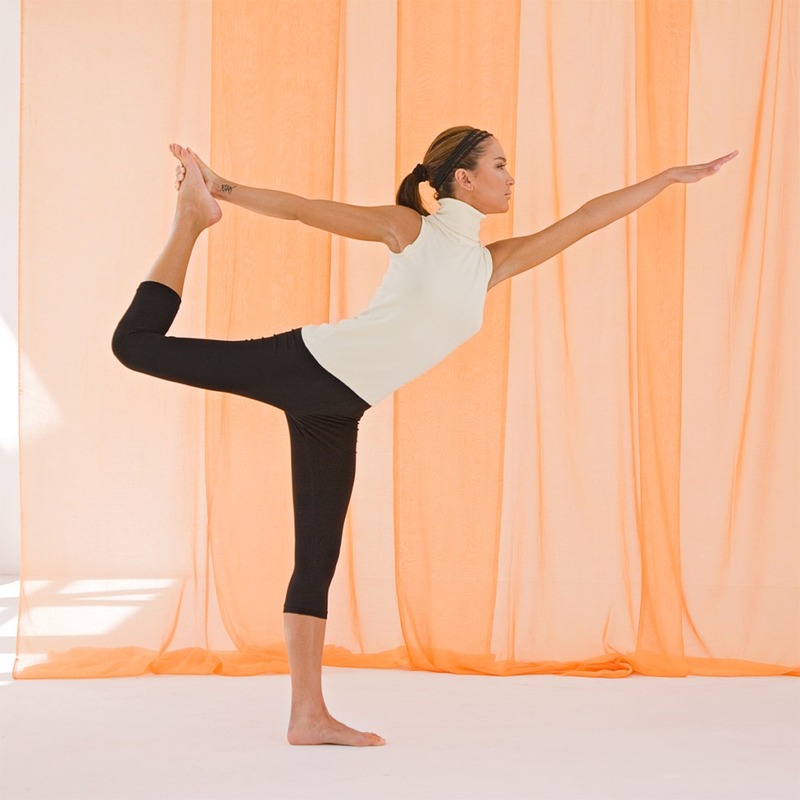
Step-by-Step Instructions for Entering Dancer Pose
Entering the Dancer Pose, or Natarajasana, involves balance, flexibility, and focus. Here’s a detailed step-by-step guide to help you achieve this graceful pose:
- Start in Mountain Pose (Tadasana): Stand tall and steady. Place your feet together with weight evenly distributed.
- Shift Your Weight: Carefully shift your weight onto your right foot. Keep your inner foot grounded and strong.
- Bend Your Left Knee: Slowly bend your left knee. Bring your left heel toward your left buttock.
- Reach Back with Your Left Hand: Extend your left arm backwards. Try to grasp the inner ankle of your left foot. If difficult, use a strap around your foot and hold the strap instead.
- Raise Your Right Arm: As your left hand holds your foot or strap, raise your right arm forward and up towards the sky.
- Find Your Focus: Look straight ahead. Focus on a steady point to maintain balance.
- Lean Forward: Gently lean your torso forward. At the same time, push your left foot into your hand or strap, lifting the leg up.
- Lift and Stretch: Continue to lift your left leg higher. The arm and leg’s pulling action will naturally cause your back to arc into a gentle bend.
- Hold Your Pose: Maintain the pose for a few breaths. Ensure your standing leg stays strong but not locked at the knee.
- Release Slowly: To exit, slowly release your leg. Bring your torso back to upright. Return to Mountain Pose and repeat on the opposite side.
By following these steps, you can gracefully enter and maintain the Dancer Pose. Remember to listen to your body and use props like a strap to assist if needed. With practice, you’ll enhance your balance, strength, and the beauty of your pose.
Common Challenges and Misalignments in Dancer Pose
Yoga dancer pose, or Natarajasana, is indeed challenging. Many yogis struggle with it. Common issues often arise from balance and alignment. Recognizing these can help improve your pose and safety. Here are frequent challenges and misalignments to be aware of:
- Balance Difficulties: Newcomers find it hard to stand on one leg. It affects the pose’s stability and shape. Strengthen your legs and core. Use a wall for support initially.
- Grasping the Foot: Reaching and holding the raised foot is tough. Extendibility in the shoulders and quads matters here. Use a strap if direct holding isn’t possible yet.
- Hip Alignment: Hips may not stay level. They can tilt sideways, leading to misalignment. Keep them squared to the front. It ensures an even stretch and proper posture.
- Overarching the Back: Avoid pushing too far into the backbend. This can strain the spine. Focus on a uniform arch across the back.
- Leaning Instead of Lifting: Some lean too far forward. This limits the lift of the back leg. Keep your chest up and back leg active. This creates a dynamic tension balance.
- Hyperextending the Standing Knee: Locking the knee can cause injury. Keep a micro-bend to avoid this. It also activates your leg muscles for better support.
- Rushing the Process: Moving too fast can lead to falls or strains. Enter and exit the pose slowly. Mindfulness and patience are key.
By addressing these common issues, you can refine your Natarajasana. Remember to practice with attentiveness. Don’t be discouraged by initial challenges; they are part of the journey in yoga. With time, you’ll see improvements in balance, flexibility, and overall mastery of Dancer Pose.
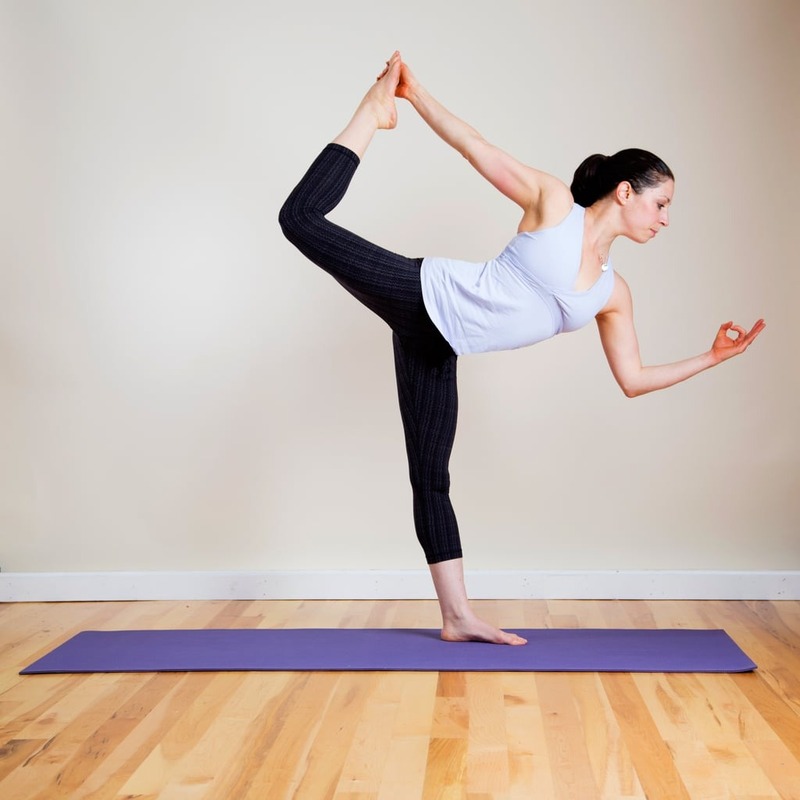
Advanced Variations of Dancer Pose
Once you are comfortable with the basic Natarajasana, consider trying advanced variations. Advanced versions challenge your balance, flexibility, and strength more. Here are options to take your Dancer Pose to the next level:
1. Full King Dancer Pose: This requires more back flexibility. Reach both hands back to hold the foot or ankle, instead of just one.
2. Mermaid Pose: Enter a variation by resting the foot in the crook of your elbow. Extend the other arm up and overhead to meet the other hand.
3. Chapasana: Grab the raised foot from the outside. Extend the other arm forward for counterbalance.
4. Tilted Dancer: Tilt the torso more to the side while lifting the leg higher. It requires strong side body muscles.
Remember, these require a solid foundation and should not be rushed. Increase your practice gradually. Use props as needed for support. And most importantly, stay safe to avoid injury. With practice, these advanced variations can add depth to your yoga journey.
Incorporating Props for Dancer Pose
Incorporating props can enhance your Yoga dancer pose practice, particularly if you’re working on balance or flexibility. They offer the support you need to perform the pose safely and effectively. Here’s how to use common yoga props for Natarajasana:
1. Using a Strap: A strap is a fantastic tool if you struggle to reach your foot. Loop it around your elevated foot, holding the ends with your hand. Gradually walk your hands closer to your foot as your flexibility increases.
2. Utilizing a Wall: Standing near a wall provides stability. You can lightly touch the wall with your fingertips to help maintain balance as you get into the pose.
3. Implementing a Block: If you can’t reach the floor while setting up for the pose, a block can act as an extension of your arm. Carefully position it under your hand for support as you begin.
4. Choosing the Right Prop: Not all props are suitable for everyone. Experiment with different props to find what works best for you.
5. When to Use Them: Props are most helpful when learning the pose or when trying to improve certain aspects, such as lifting the leg higher or staying balanced.
Remember, props are aids, not necessities. Use them as stepping stones towards performing the pose without assistance. As you grow stronger and more balanced, you may find that you rely on them less and less.
Maintaining Safety and Avoiding Injury in Dancer Pose
Safety is key when practicing Yoga dancer pose (Natarajasana). To avoid injury, follow these essential tips:
- Warm-Up Adequately: Begin with a thorough warm-up. Stretch your legs, hips, and back before attempting the pose.
- Know Your Limits: Listen to your body. If you feel strain or pain, ease out of the pose immediately.
- Use Props: Don’t hesitate to use a strap or wall for support. Props can help you maintain balance and alignment.
- Engage Your Core: Keep your abdominal muscles active. They provide support and help protect your lower back.
- Focus on Alignment: Proper alignment is crucial. Ensure your hips are squared, and your standing knee is not locked.
- Practice Patience: Move into and out of the pose slowly and with control. Quick movements can lead to injury.
- Build Gradually: Increase the intensity and depth of the pose over time as your flexibility and strength improve.
- Consistent Practice: Regular practice makes your body more accustomed to the pose. Gradually, the risk of injury decreases.
Remember, Yoga dancer pose is challenging but rewarding. Always prioritize safety, and over time, you’ll enjoy the benefits while minimizing the risks.
